
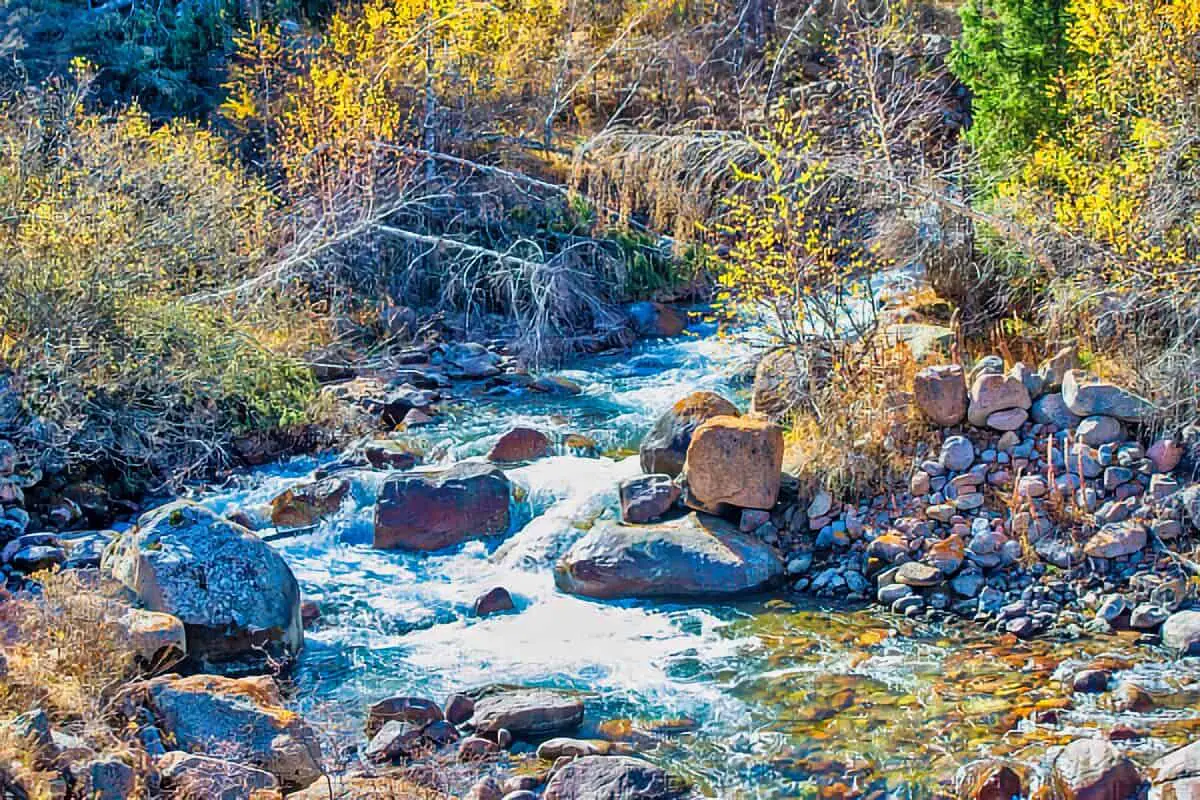
Carson National Forest Boondocking Locations Guide: Carson National Forest offers many spots for boondocking. Boondocking means camping outside designated campgrounds and enjoying more freedom in nature. In this forest, we can find dispersed camping sites across its 271,555 acres. These spots often give us a chance to experience solitude and peaceful surroundings without the typical campground crowds.
We should remember that dispersed camping means no facilities, so being prepared is important. It’s a good idea to know the forest rules, pack out all trash, and respect the land. Whether we want a quiet place to park our camper or a spot to pitch a tent, Carson National Forest has plenty of options for low-impact, back-to-nature camping.
Location And Access
Carson National Forest is in northern New Mexico, just south of the Colorado border. It covers nearly 270,000 acres, giving us many spots for boondocking and dispersed camping.
We can find access points near Taos, a small town known for its ski valley. The area along the road to Taos Ski Resort offers free camping spots near Lower Hondo Creek. These spots are easy to reach and are suitable for tents and larger RVs.
The forest includes several natural features that shape the camping areas. The Rio Grande Gorge runs through the forest. This gorge provides scenic views and access to trout streams.
Boondocking locations also appear near creeks and rivers like the Red River, which is known for trout fishing. These water sources make camping more enjoyable, especially in warmer months.
Winter access can be affected by snow, especially near higher elevations such as Taos Ski Valley. It’s important for us to check road conditions before heading out in colder months.
Cattle grazing is common in some parts of the forest, so we should watch for livestock and keep a respectful distance.
| Key Locations | Description |
|---|---|
| Taos | Nearby town with access points |
| Rio Grande Gorge | Scenic canyon with fishing streams |
| Red River | Popular trout stream access |
| Lower Hondo Creek | Free dispersed camping spots |
| Rio Grande Gorge Bridge | Notable landmark for navigation |
Directions: How To Get There And What To Expect
We start by taking Highway 88, one of the main roads leading toward Carson National Forest. From there, we turn onto forest service roads that are less traveled but open to most vehicles.
These roads are usually gravel or dirt. They can be rough in places, so truck campers and other high-clearance vehicles handle the terrain better. We recommend checking road conditions before heading out, especially after rain.
Boondocking spots are often found along these forest roads or near the river by Lower Hondo. These areas have no hookups or facilities, so we pack everything we need, including water and supplies.
For those with off-highway vehicles (OHVs), some trails connect to dispersed camping areas. OHVs make it easier to explore remote spots, but remember to stay on designated trails to protect the environment.
We expect minimal signs and no marked campgrounds in many boondocking locations. It’s important to pick a flat or gently sloping spot for parking and camping. Leave no trace by packing out all trash and respecting the natural surroundings.
Amenities And Activities
In Carson National Forest, many of the boondocking spots are dispersed camping areas with few or no services. This means we won’t find picnic tables, fire rings, or trash removal in these locations. We need to be prepared to pack out everything we bring in.
Some developed campgrounds are nearby, offering picnic tables, fire rings, toilets, and potable water. These spots provide more comfort if we want a mix of wild camping and basic amenities.
The forest supports a variety of activities. We can enjoy hiking on many trails that showcase wildflowers and scenic views. Fishing is popular in the rivers and streams that run through the forest. These places often provide peaceful campsites near the water.
For those using RVs, there are some areas along the road to Taos Ski Resort where rigs of all sizes can park. These spots are often right by the river, making for a great natural setting.
Our time in Carson National Forest can include hunting, biking, skiing, and snowmobiling, depending on the season and location. The mix of developed campgrounds and dispersed camping allows us to choose the type of experience we want.
Here’s a quick summary:
| Activity | Availability | Notes |
|---|---|---|
| Camping | Dispersed and developed | Few services in wild campsites |
| Hiking | Many trails | Wildflowers and scenic views |
| Fishing | Streams and rivers | Peaceful spots near campsites |
| RV Parking | Select locations | Suitable for all sizes of rigs |
| Picnicking | In developed campgrounds | Picnic tables and fire rings |
Camping Regulations And Restrictions
When we camp in Carson National Forest, we mostly follow dispersed camping rules. Dispersed camping means we camp outside developed sites, usually without services like water or toilets.
We need to use areas designated for camping to protect nature. Staying too long in one spot is not allowed. We can camp up to 14 consecutive days in the same location. After that, we must move at least 25 miles away.
The Forest Service sets rules to limit our impact. We should not camp on private land without permission. Also, we must check maps called Motor Vehicle Use Maps (MVUM) to know where vehicles are allowed.
Wildfire risk is a big concern. During dry seasons, campfires might be banned. We need to always check current fire restrictions before lighting any fire. Using camp stoves is often safer and allowed even when fires are restricted.
Permits are usually not required for dispersed camping, but special rules might apply in some areas. It’s important for us to check with ranger districts if we plan to camp longer or in sensitive spots.
We should pack out all trash, respect wildlife, and leave no trace. These steps help protect the forest and keep it open for us and others in the future.
Leave No Trace
When we camp in Carson National Forest, we must follow Leave No Trace principles to protect the land. This means we camp at least 200 feet away from lakes and streams to keep water sources clean and safe.
We use existing roads and campsites whenever possible. This helps prevent damage to plants and soil. Good campsites are found, not made. We avoid creating new fire rings or clearing areas.
Our trash and food waste always leave with us. We pack out everything we bring in. This keeps the forest clean and protects wildlife from harmful human food.
We keep fires small and only use established fire rings. If there is dry weather, we follow fire restrictions. This helps prevent wildfires.
We respect wildlife by watching from a distance and not feeding animals. We also keep noise low to maintain the quiet of the forest.
Following these simple rules helps us enjoy Carson National Forest while keeping it healthy for future visitors. Together, we can protect this special place by practicing Leave No Trace every time we camp.
Information Resources
Carson National Forest – U.S. Forest Service
New Mexico Tourism Department
New Mexico Game and Fish Department – Wildlife
National Weather Service – New Mexico Climate Information
Leave No Trace Center for Outdoor Ethics
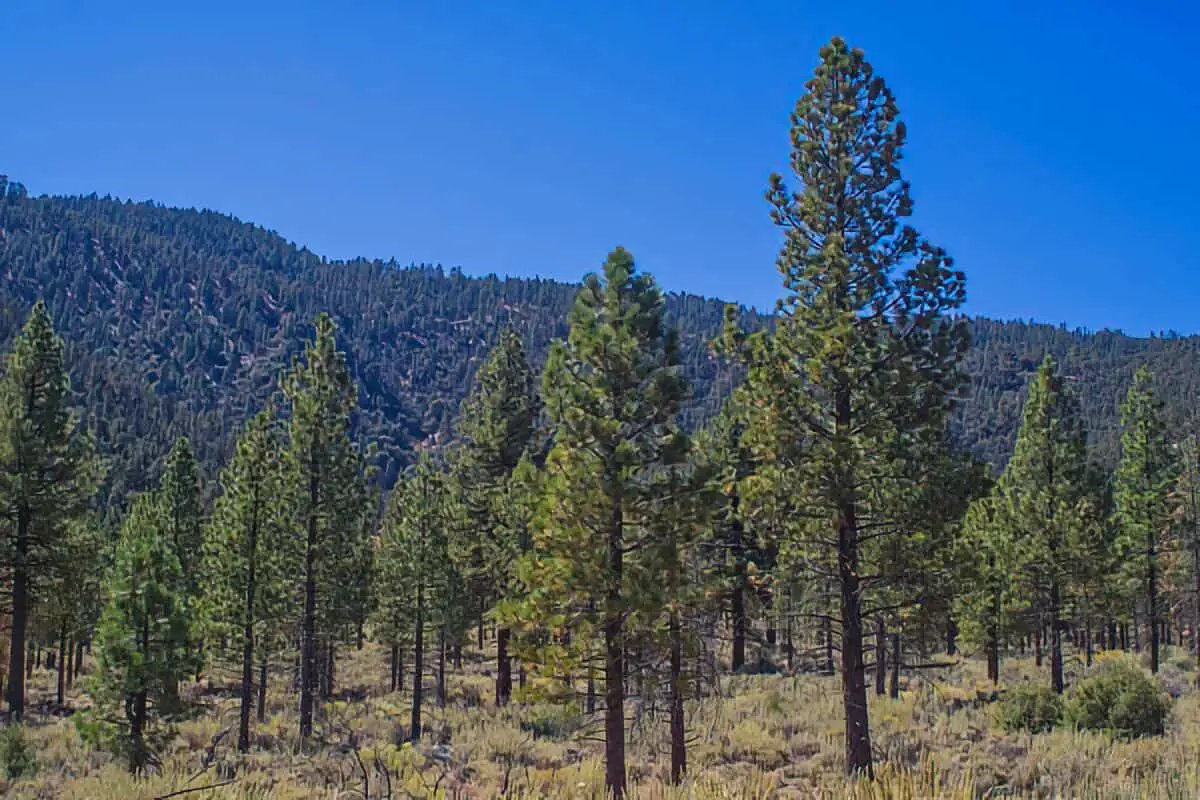
Carson National Forest Free Boondocking Locations
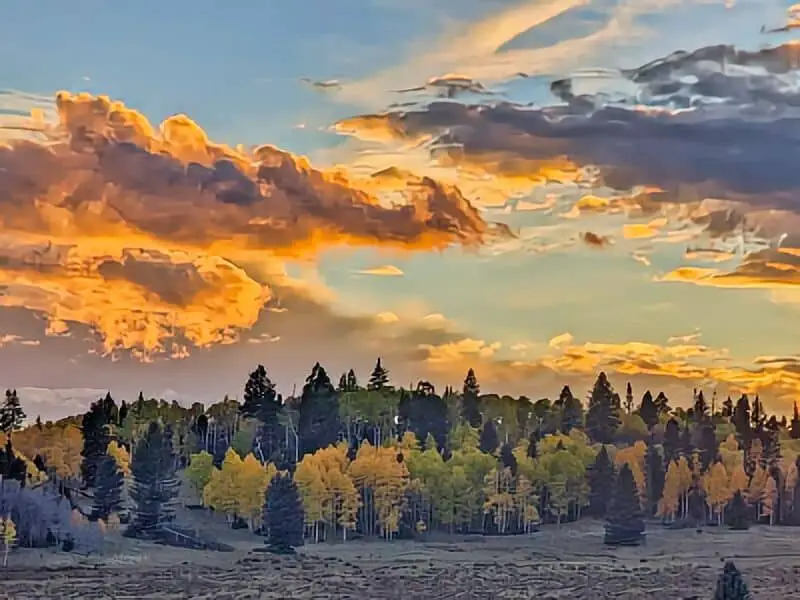
Tres Piedras Felipito Canyon Boondocking Location
36.5931, -106.18561
Located in Carson National Forest near Tres Piedras, the Felipito Canyon boondocking area sits at approximately 8,100 feet elevation and offers a peaceful forest escape for campers looking to disconnect. The site features multiple dispersed clearings ideal for dry camping. There are no restrooms, picnic tables, water, or trash services, so visitors must be fully self-sufficient. The surrounding forest includes piñon pine, juniper, and open canyon areas that provide scenic views and natural shelter from wind.
Things to Do: Outdoor activities in the area include hiking along the canyon rims, birdwatching, and nature photography. The area is quiet and remote, perfect for those looking to enjoy the Carson National Forest’s natural terrain. The nearby town of Tres Piedras is known for its rock climbing sites and proximity to the Rio Grande del Norte National Monument.
Directions: From US-64 in Tres Piedras, head west onto Forest Road 87 and follow signs toward Felipito Canyon. The forest road continues south before turning east toward the site. The last few miles are narrow and rocky.
Vehicle Access: The road is unpaved and conditions can vary. High-clearance vehicles are strongly recommended. Travel trailers or larger rigs may have difficulty navigating tight turns and uneven ground.
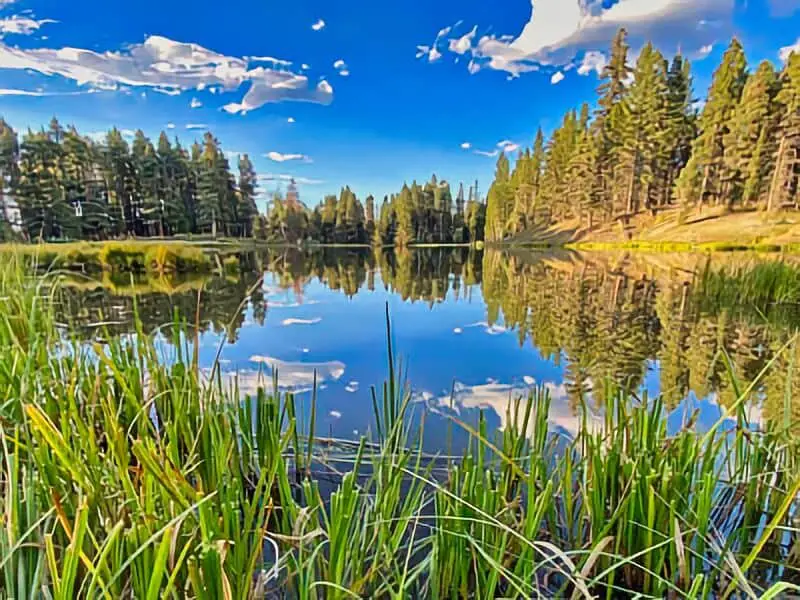
Trout Lakes Boondocking Location
36.606389, -106.378942
Trout Lakes Boondocking Location (Carson National Forest, NM)
Situated deep in Carson National Forest, the Trout Lakes boondocking area offers remote, dispersed camping close to the scenic Trout Lakes themselves. The area sits at an elevation of around 9,000 feet and provides cooler temperatures in the warmer months. This boondocking site is primitive, with no developed facilities—no restrooms, no potable water, and no trash removal. Campers need to bring in everything they need and pack out all waste. Several small clearings near the lake offer space for tents and smaller vehicles.
Things to Do: This is an ideal spot for anglers looking to fish in the two nearby trout-stocked lakes. The surrounding forest also provides ample opportunities for hiking, wildlife viewing, and quiet relaxation. Stargazing here is exceptional due to the lack of artificial light.
Directions: From the town of Cañon Plaza, take Forest Road 559 south until it intersects with Forest Road 284. Continue west on 284 and follow signs toward Trout Lakes. The road narrows and becomes more rugged near the lakes.
Vehicle Access: High-clearance vehicles are recommended. Smaller RVs or vans can make it in dry conditions, but the final approach is narrow with limited turnaround options. Large rigs are not advised.
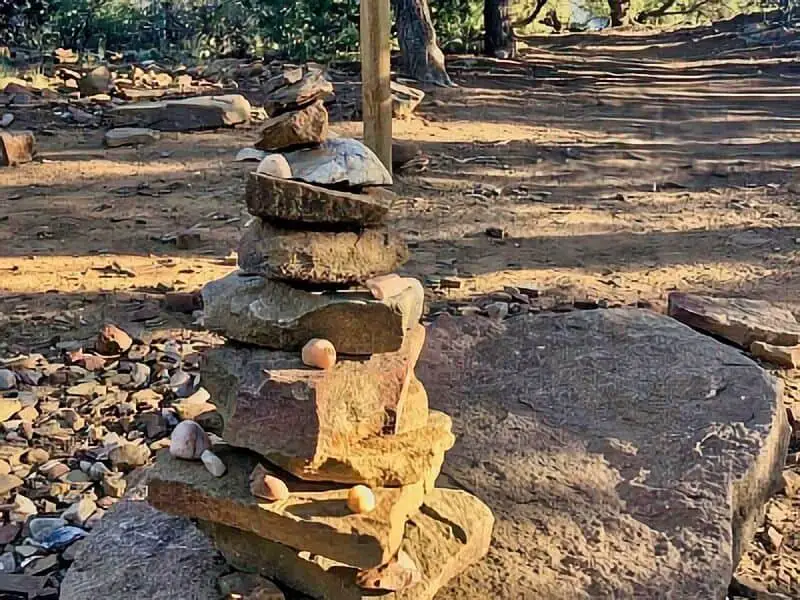
Canjilon Creek Boondocking Location
36.543393, -106.317381
Located within the Canjilon Ranger District of Carson National Forest, the Canjilon Creek boondocking area sits at an elevation of approximately 8,000 feet. This site offers a serene environment with a mix of forested terrain and open spaces. The area features 6-15 dispersed campsites, accommodating RVs up to 25 feet in length. Amenities are minimal, with restrooms available, but no potable water or trash services, so campers must come prepared and practice Leave No Trace principles.
Things to Do: The surrounding area is ideal for hiking and wildlife viewing, with trails meandering through the forest and along the creek. The nearby Canjilon Lakes provide opportunities for fishing and picnicking. The high elevation and clear skies make it a great spot for stargazing.
Directions: From the town of Canjilon, take Forest Road 130 into the Carson National Forest. Follow the road to the designated boondocking areas near the creek.
Vehicle Access: The access road is gravel and can be navigated by most vehicles in dry conditions. However, during wet weather, the road may become challenging, and high-clearance vehicles are recommended.

EL Rito Creek Boondocking Location
36.579431, -106.168588
Situated in the El Rito Ranger District of Carson National Forest, the El Rito Creek boondocking area is located at an elevation of approximately 8,009 feet. This free campsite is open from April through November and offers a peaceful setting along the creek. The area is known for its proximity to the Continental Divide Trail, making it a popular spot for hikers and backpackers. Amenities are limited, with restrooms available, but no potable water or trash services.
Things to Do: Visitors can enjoy hiking, camping, and wildlife viewing in the surrounding forest. The Continental Divide Trail offers a moderately challenging route, taking an average of 2 hours and 39 minutes to complete. The trail is great for backpacking and hiking, and it’s unlikely you’ll encounter many other people while exploring.
Directions: From Vallecitos, take County Road 437 into the Carson National Forest. Follow the road to the designated boondocking areas along El Rito Creek.
Vehicle Access: The access road is gravel and can be navigated by most vehicles in dry conditions. However, during wet weather, the road may become challenging, and high-clearance vehicles are recommended.
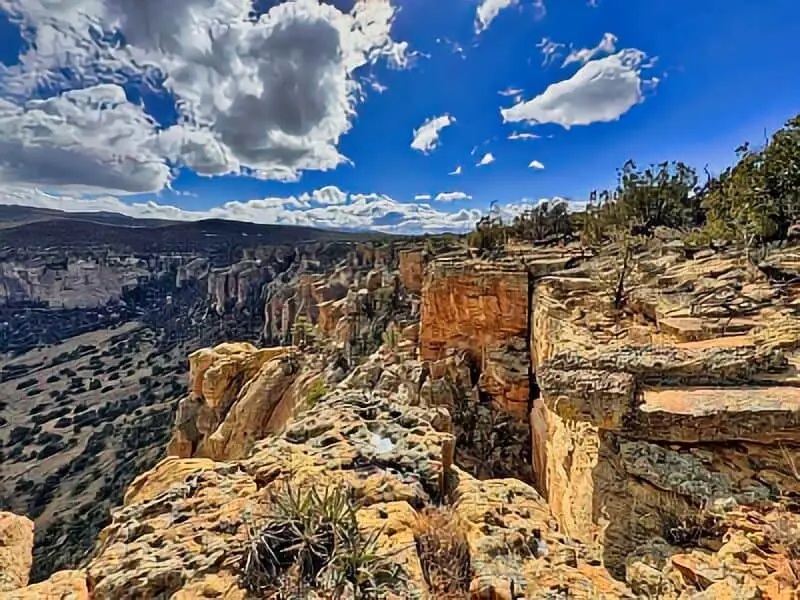
Carson FSR 125 Boondocking Location
36.524415, -106.477443
Located near Cebolla, New Mexico, the Carson FSR 125 boondocking area sits at an elevation of approximately 7,766 feet within the Carson National Forest. This free campsite offers 6-15 dispersed campsites along Forest Road 125, accommodating RVs of unlimited length. The area is managed by the Forest Service and provides a peaceful setting for campers seeking solitude. Amenities are minimal, with no restrooms, potable water, or trash services, so campers must be self-sufficient.
Things to Do: The surrounding forest offers opportunities for hiking, wildlife viewing, and photography. The area’s remote location makes it ideal for stargazing and enjoying the natural beauty of the forest.
Directions: From Cebolla, take Forest Road 125 into the Carson National Forest. The boondocking sites are located along the road, approximately 0.25 to 2 miles from the paved road.
Vehicle Access: The access road is gravel and can be navigated by most vehicles in dry conditions. However, during wet weather, the road may become challenging, and high-clearance vehicles are recommended.
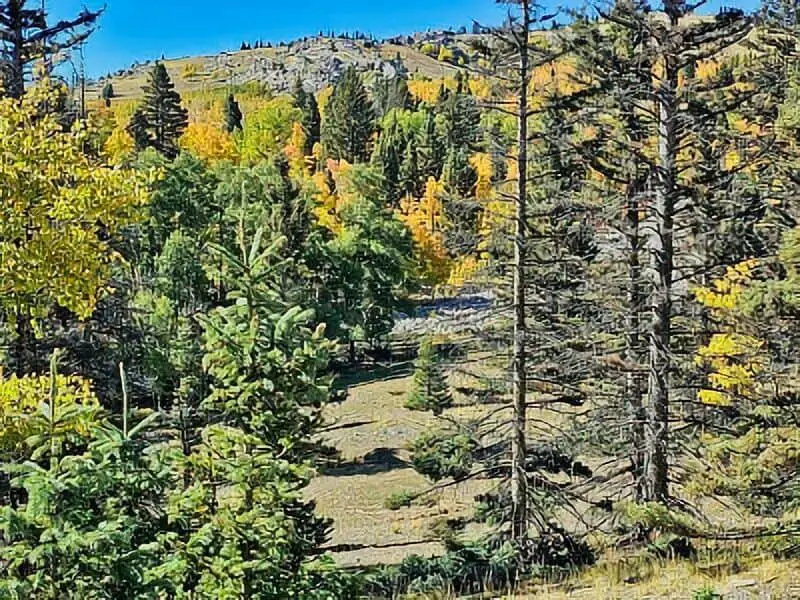
Tres Piedras Boondocking Location
36.655331, -105.977997
Situated near the town of Tres Piedras, New Mexico, this boondocking area is located within the Carson National Forest at an elevation of approximately 8,000 feet. The site offers 6-15 dispersed campsites along a dirt road, approximately 2 miles from a paved road. The area is undeveloped, with no amenities, so campers must be fully self-contained.
Things to Do: The surrounding forest provides opportunities for hiking, wildlife viewing, and photography. The nearby Rio Grande Gorge Bridge and the town of Taos offer additional attractions for visitors.
Directions: From Tres Piedras, take US-64 west and look for Forest Road 64J. Turn onto 64J and follow the dirt road to the dispersed camping areas.
Vehicle Access: The access road is dirt and can be navigated by most vehicles in dry conditions. However, during wet weather, the road may become challenging, and high-clearance vehicles are recommended.
Frequently Asked Questions
We need to understand the rules for camping in Carson National Forest, where to find reliable maps, and which spots give a true backcountry feel. Knowing which areas are best for boondocking and how accessible the trails are helps us plan better trips. Practicing leave-no-trace helps keep the forest clean for everyone.
What are the regulations for dispersed camping in Carson National Forest?
We must camp at least 100 feet away from water sources. Fires are only allowed in established fire rings or stoves when conditions are safe. Dispersed camping is generally allowed for up to 14 days in one spot. Always check for updates on fire restrictions.
Where can I find maps indicating permitted boondocking sites in Carson National Forest?
Official maps are available at Carson National Forest ranger stations and on the U.S. Forest Service website. Some hiking and camping apps also have detailed maps with dispersed camping sites marked.
What are the best camping spots for an authentic backcountry experience in Carson National Forest?
Areas near Tres Piedras and the northern parts of the forest offer quiet, less traveled locations. These spots allow us to experience nature with fewer campers nearby.
Are there any specific areas within Carson National Forest that are recommended for boondocking?
Tres Piedras area and some parts along Forest Road 150 are common for dispersed camping. These zones have open spaces and access to trails but fewer facilities.
Can you provide details on the accessibility of trails for campers engaging in boondocking in Carson National Forest?
Most trails near dispersed camping sites are moderate in difficulty and accessible by foot or mountain bike. Some roads leading to camping spots require high clearance vehicles, especially after rain.
What should campers know about leave-no-trace principles while boondocking in Carson National Forest?
We must pack out all trash and leftover food.
We should also avoid disturbing plants and wildlife.
Use existing fire rings. Additionally, bury human waste 6-8 inches deep, away from water.
Minimizing impact protects the forest for future visitors.
